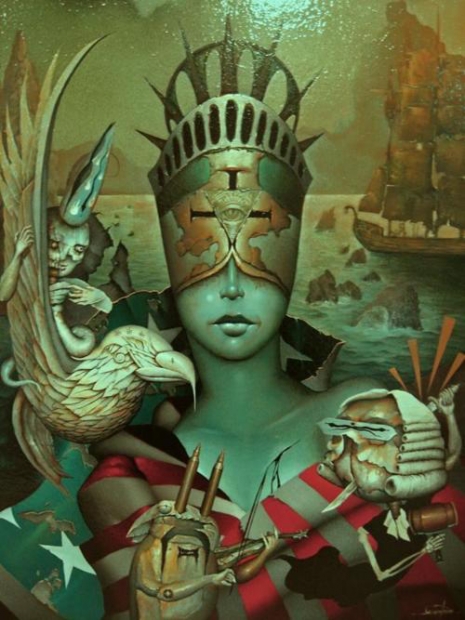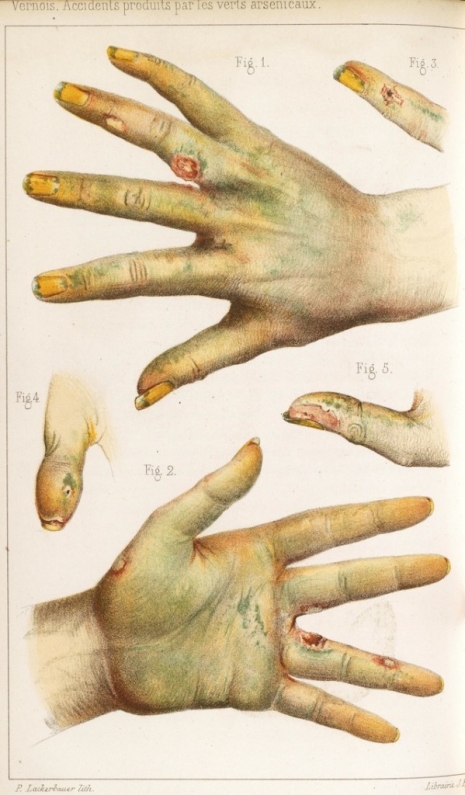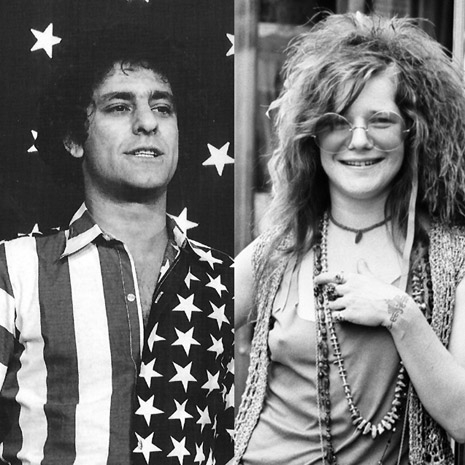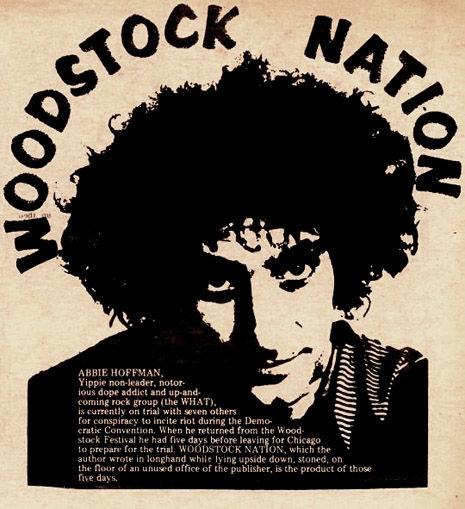
Photo: Christian Benavides
Here’s a picture of what, to an English, London-based US politics junkie, amounted to a peculiar sort of heaven…
It is Election Day, and I am riding shotgun in an SUV through unsmiling Texas…The back of the truck, covered in bumper stickers (‘SECEDE!’ ‘LIBERTARIAN!’ ‘Got shave ice?’), is also piled high with firearms… Rush Limbaugh is on the airwaves.
I’d heard “Rush” do his stuff before, online, back in the UK (that is, as a leftish, foreign voyeur). Now though – due to the place, the setting, and the others in the vehicle – “Rush” is no longer addressing some distant, crazy demographic, he is addressing us – and even, me.
“The bigger government gets, the less freedom there is. That’s just the way of the world, folks… “
I can feel, suddenly, how warm it must be tucked in beneath the dragon’s wing of American conservatism.
For the previous twelve-fifteen months, I had consumed at least two hours of US election news and commentary a day back in London. Chance had turned that 2-D experience into a 3-D one: I was staying in Austin to make an (unrelated) short film, and only after arranging everything realized I would be there for the vote.
Well, we had finished filming that afternoon. The driver of the SUV, Jim, was the local cameraman I’d hired. He was a conservative, a Christian, a libertarian and a sure-fire ‘Second Amendment’ sort. He’d supported Ted Cruz in the primaries, and had a modest, Glenn Beck-type aversion to Trump. He had already voted for Gary Johnson, but would very likely have gone Republican in a swing state.
In the back was Jim’s assistant and best bud, Lloyd, a thirty-six-year-old handyman. Jim and Lloyd lived a few minutes away from one another, in the pious and paranoiac suburbs of Pflugerville, where (as I witnessed) residents actually wave hi to one another, bagged-up AK-47s swaying from shoulders. Lloyd was a former Cruz supporter too, but had long since came around to – and voted for – Trump.
Limbaugh was now reciting, with that gropingly intimate gruffness, the right-wing LIBERTY catechism. He was putting his whole self into it, too, in honor of the Historic Occasion. This catechism more than touched upon the Second Amendment. Meanwhile, my new friends and I, on our way to firing some guns, were also (politely) arguing about them.
“But what would ya do,” said Lloyd, keen to cut right to the heart of the matter, and leaning right up between the front seats. “If someone broke into your place in London, to rape your wife and kill your kids? What would you do, Thomas? Ask ’em to leave?”
Despite the facetious note at the end, this was no rhetorical question. Lloyd wanted to know. So, by the looks of it, did Jim, who kept glancing over from his big Texan steering wheel, equally curious how one could even go about conceiving of such an event in a country that prohibits lethal weapons. (Had I, perhaps, cultivated some dangerous hand-to-hand ninja skills?)
“But that’s a ridiculously unlikely event.”
“You can’t be too careful, Thomas,” said Jim.
“You can though!” (Indeed, I was increasingly convinced that America was the definition of Being Too Careful.) “A piece of masonry might drop on your head and kill you, that doesn’t mean you go around carrying a metal umbrella.”
This journey is taking place because, the previous day, I had been (naively) scandalized to discover that my small crew were walking Austin’s squeaky-clean streets armed. I had never, I confessed, even held a gun. Jim and Lloyd had decided, there and then, to initiate me, intimating that the first whiff of cordite would see my English soul born again hard.
Jim flipped the dial to The Glenn Beck Show. To his amusement (take it as a testament to how closely I’d followed the damn election), I could hum along to the show’s sickly theme ditty.

Photo: Jordan Bunch
Finally, our SUV pulled into the Eagle Peak Firing Range.
I had half expected to encounter a devil-may-care joie de vivre therein. But no. All in all, the spirit in which “Second Amendment People” go about their pastime is achingly careful, like a weird mixture of model railroading and snake handling. I even had my wrists slapped by one of the Eagle Peak Firing Range attendants (bald and bent-double, with bright white mustache) for firing one of Jim’s semi-automatics too quickly.
“Yer Limey’s gettin’ carried away!” he told them.
Far more interesting than all the latches, barrels and banging was the thought of those millions of Americans simultaneously inching towards the voting booths, and of the mind-boggling political significance of what we were doing. Jim and Lloyd, for instance, both admitted to being “scared” by the prospect of a President Trump. He scared them – not enough, but somewhat– because of that overt streak of megalomania. Clinton, on the other hand, scared them more solely because of her perceived threat to those “second amendment rights.”
Were Americans proportionally more scared of death – or at least violent death – than other nationalities? Is it precisely this that makes them – paradoxically – so fucking dangerous?
America’s Other Half
For election night itself I was off to attend the Travis County Democratic Party’s shindig at Austin’s Driskill Hotel. Jim, very kindly braving a couple of hours of Austin traffic, dropped me off. (Conservatives, I have to say, are pretty kind people.)
It was long clear to me that, to many, Trump was a hero figure– a swaggering maverick macho sent by God to heave back the clock. What hadn’t occurred to me from the UK, however, was that cautious, data-driven, super-scripted, center-cleaving Hillary might be viewed as a hero, too. A Straight White Male want of imagination on my part, this, to be sure: taking the Driskill attendees as a local sample, it was immediately clear that Hillary was a hero to (at least) millions of American women.
This was of course in part because of the clear symbolism of the fight – ignoramus pussy-grabber versus shattered glass ceiling, and all that. However, I saw it had something to do with Hillary as an individual, too. Many of the supporters, covered in doubly pointed buttons (“I’m with HER!” “The Future is Female!” “Let’s Make Her-story!”), were ambitious, professional, young women, and were gazing up at the early election coverage with proportional but tangible admiration for the professionalism and (thus far) effectiveness of Clinton’s ascent.
After all, their candidate had done what had to be done, had worked hard, and had (again, up to that night) largely succeeded. It was a philosophy many a careerist lived by, yet for a woman, maximal establishment success in 2016, conventionally achieved vis-à-vis the unremarkable method of the Long Game, still required a fortitude that was arguably heroic.
Due to the time difference, I’d never watched US results come in live before (let alone, ‘in the flesh’), and to my virgin, outsider eyes, the main event resembled nothing other than (American) Football: an interminable, attritional contest of hard-won yards and mind-numbing strategic rumblings.
We all know, of course, how the game ultimately went.
Afterthought
Once the whole sorry contest had run its course, I got a cab back to where I staying (North Loop). The driver had voted for Hillary, and was depressed as hell. Then he told me (upsetting my simple outline) that he was relieved he already own five guns himself: under a President Trump, he suspected he might just end up needing them.
“I think there’s going to be a war,” he put in, as an afterthought.
He was right about that, I reckoned. For all Trump’s isolationist rhetoric (the only OK thing about his campaign) it is almost impossible to imagine the Trump Era coming to term without a significant conflict. And conflict evidently remains America’s grand passion, not to mention its net surplus: the globe sits braced for export.
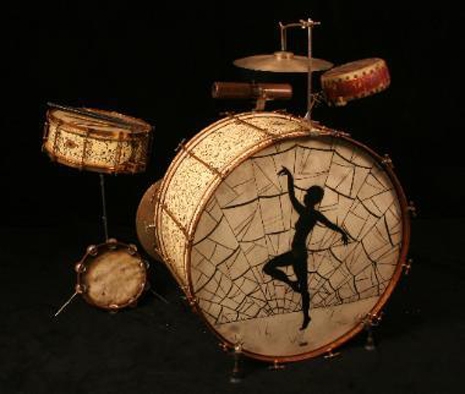


















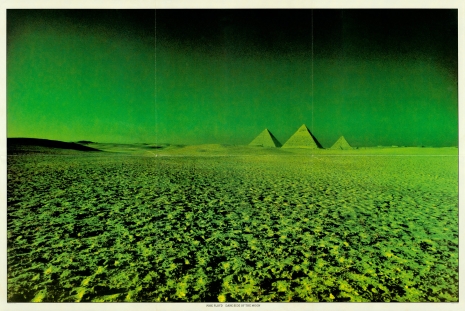
_465_465_int.jpg)
